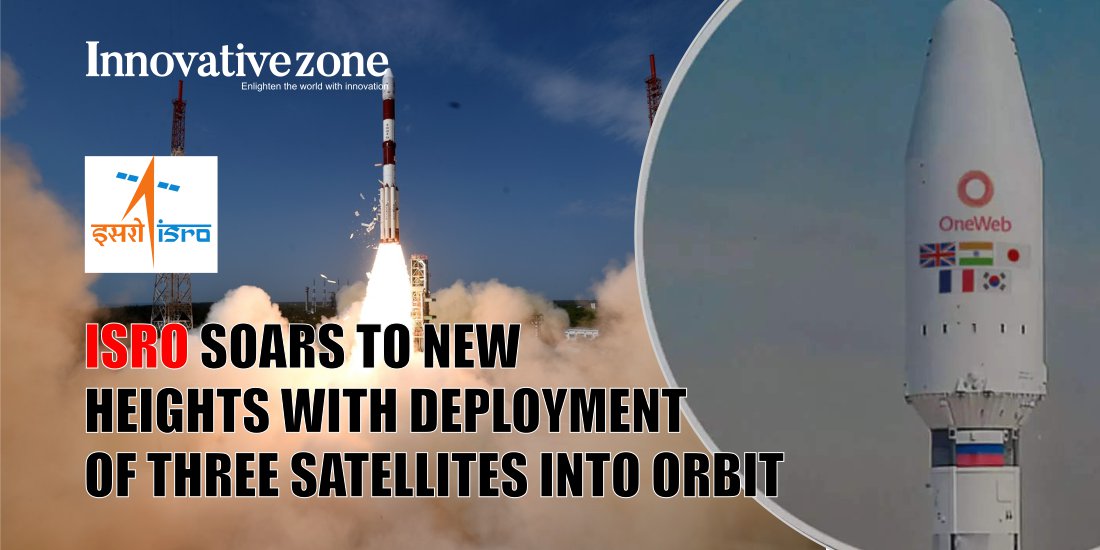ISRO Soars to New Heights with Deployment of Three Satellites into Orbit
The Indian Space Research Organization on Friday (February 10) launched the second developmental flight of Small Satellite Launch Vehicle (SSLV) at 9:18 am from Satish Dhawan Space Centre, Sriharikota, Andhra Pradesh.
The rockets were released from first launch pad with three mini, micro and nano satellites at 9:18 am and aligned into a 450 km circular orbit during its 15-minute flight.
The ISRO successfully placed three satellites into orbit during its launch, three satellites are ISRO’s EOS-07, Janus-1 by Antaris, a US-based firm, and AzaadiSAT-2 by SpaceKidz, a Chennai-based space start-up. AzaadiSAT-2, weighing 8.7 kilograms, was developed by 750 girl students from India.
“Mission is accomplished successfully. SSLV-D2 placed EOS-07, Janus-1, and AzaadiSAT-2 into their intended orbits,” the space agency tweeted from its official handle announcing about the successful launch.
Andhra Pradesh: #ISRO launches Small Satellite Launch Vehicle-SSLV-D2- from Satish Dhawan Space Centre at Sriharikota to put three satellites EOS-07, Janus-1 & AzaadiSAT-2 satellites into a 450 km circular orbit#SSLVD2 pic.twitter.com/caRP4V6LZf
— The Times Of India (@timesofindia) February 10, 2023
ISRO
Research and development company
- Headquarters: Bengaluru
- Founded: 15 August 1969
- Founder: Vikram Sarabhai
- Parent organization: Space Commission
- Subsidiary: Vikram Sarabhai Space Centre
- Officeholder: S. Somanath (Chairperson)
- Jurisdiction: India
- Rivals – NASA, SpaceX (CEO: Elon Musk), China National Space Administration, and more
“Congratulations to all 3 satellite teams for making the satellites as well as placing them in right orbit. We analysed the problems faced in SSLV-D1, identified corrective actions & implemented them at a very fast pace to ensure the vehicle becomes successful this time,” said ISRO chief.
The SSLV, designed for low earth orbits, has the capability to launch satellites weighing up to 500 kilograms on a “launch-on-demand” basis. ISRO claims that the SSLV provides cost-effective access to space, offers low turn-around time and flexibility in accommodating multiple satellites, and requires minimal infrastructure.
Measuring 34 meters in height and 2 meters in diameter, the SSLV is equipped with three solid propulsion stages and a velocity terminal module. It has a lift-off mass of 120 tons.
However, the first test flight of the SSLV suffered a partial failure on August 9, as the rocket failed to place its satellite payload in the intended orbit.
Future: The Prospects and Ambitions of the Indian Space Research Organization (ISRO)
The future of the Indian Space Research Organization (ISRO) looks very promising, as the organization continues to make advancements in the field of space technology. In recent years, ISRO has made successful launches of its heavy-lift rocket, the GSLV Mark III, and its Mars Orbiter Mission (MOM), which made India the fourth space agency to reach Mars.
In the near future, ISRO plans to send a manned mission to space, launch its own space station, and even explore the possibility of interplanetary missions. With the increasing demand for satellite-based services, ISRO is also looking to expand its commercial satellite launch services and enhance its collaboration with international space agencies. These ambitious plans indicate that ISRO is poised to play a significant role in shaping the future of space exploration and utilization.
Must Read:-
- Top 10 Largest Oceans and Seas in the World
- Top 10 automobile companies in India 2023
- Top 10 Electrical Companies in India 2023
- Top 10 Real Estate Companies in India-2023
- Top 10 most awaited & upcoming Hindi web series 2023-24
- Top 10 Clothing Brands in India 2023
- Top 10 best cultures in the world-2023
- Top 10 best country to work and live in 2023
- Top 10 best country for education 2023
- Top 10 Most Followed Celebrities on Instagram 2023


